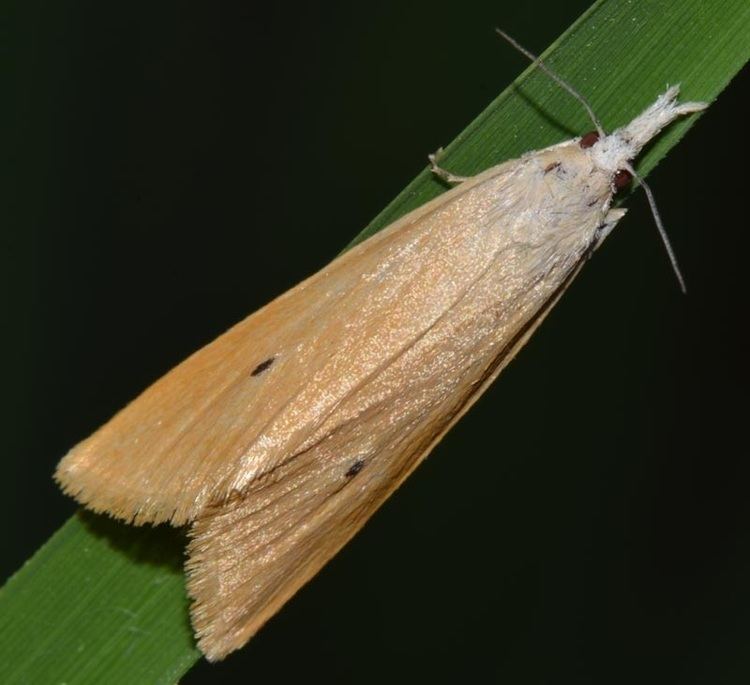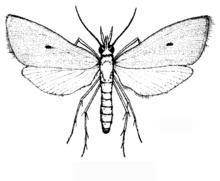Rank Species | ||
 | ||
Similar Scirpophaga, Scirpophaga innotata, Chilo suppressalis, Sesamia inferens, Butterflies and moths | ||
The yellow stem borer or rice yellow stem borer (Scirpophaga incertulas) is a species of moth of the Crambidae family. It is found in Afghanistan, Nepal, north-eastern India, Sri Lanka, Bangladesh, Burma, Vietnam, Thailand, Malaysia, Singapore, Sumatra, Java, Borneo, Sumba, Sulawesi, the Philippines, Taiwan, China and Japan.
Contents

Description
The wingspan of male is 18–22 mm and female is 34 mm. Adult males are smaller than female. Male brownish ochreous colored. Fore wings irrorated with dark scales and with the veins slightly streaked with fuscous color. A black spot found at lower angle of cell. There is an oblique fuscous line runs from apex to vein 2. A marginal black specks series can be seen. Hind wings ochreous white. Female fuscous brown with pale fuscous hind wings.
Ecology

The larvae feed on Oryza sativa, which is considered as a major rice pest throughout India and Sri Lanka that devastate rice harvest annually. They bore the stem of their host plant. Full-grown larvae are pale yellow to yellowish green with a brown head and reach a length of 20 mm. Pupation takes place in a white silk cocoon.
Damage
After hatching, early instars bore into the leaf sheath and causing longitudinal yellowish-white patches as a result of feeding. Then it invades stem of rice plant and stay in the pith to feed on the inner surface of the stem wall. But these are not externally visual as symptoms. Severe feeding cause a deep circular cut through the parenchyma tissue showing deadhearts at the vegetative stages and whiteheads at the reproductive stages.
Control

Due to heavy damage to rice throughout the world, many controlling measures underway always. Chemical controls, physical control, biological controls and many traditional methods are used to control the pest at any stage of its lifecycle. Numerous pest resistant paddy varieties have been genetically modified and introduced in to the fields by the local governments. In biological control, egg parasitism is high and widespread. Species of the three genera Telenomus, Tetrastichus and Trichogramma are greatly effective against eggs, larva and adult moths.

Conocephalus longipennis, a grasshopper is known as a serious predator of moth eggs. Other than many insect parasitoids, fungi, bacteria, viruses and mermithid nematodes are also used in eradication processes.
